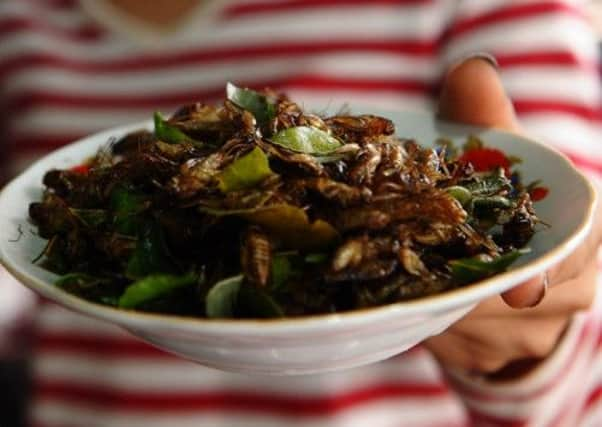‘Eating insects could fight obesity and hunger’


More than 1,900 species of insects are eaten around the world, mainly in Africa and Asia, but people in the West generally turn their noses up at the likes of grasshoppers, termites and other crunchy fare.
The authors of the study by the Forestry Department, part of the UN Food and Agriculture Organisation, yesterday said many insects contained the same amount of protein and minerals as meat and more healthy fats.
Advertisement
Hide AdAdvertisement
Hide Ad“In the West we have a cultural bias, and think that because insects come from developing countries, they cannot be good,” said Professor Arnold van Huis from Wageningen University in the Netherlands, one of the authors of the report.
The report said that “insects can supplement traditional feed sources such as soy, maize, grains and fishmeal”, adding that the ones with most potential were larvae of the black soldier fly, the common housefly and the yellow mealworm.
It also said the insects most commonly consumed by humans are beetles (31 per cent), caterpillars (18 per cent) and bees, wasps and ants (14 per cent), followed by grasshoppers, locusts and crickets (13 per cent).
Eva Muller of the UN Food and Agriculture Organisation said restaurants in Europe were starting to offer insect-based dishes, presenting them to diners as exotic delicacies.
Danish restaurant Noma, for example, crowned the world’s best for three years running in one poll, is renowned for using ingredients such as ants and fermented grasshoppers.
As well as helping in the costly battle against obesity – which the World Health Organisation estimates has nearly doubled since 1980 and affects around 500 million people – the report said insect farming was likely to be less land-dependent than traditional livestock and produce fewer greenhouse gases.
Insects are “extremely efficient” in converting feed into edible meat, the agency said. On average, they can convert two kilogrammes of feed into one kilo of insect mass. In comparison, cattle require eight kilos of feed to produce a kilo of meat.
Such farming would also provide business and export opportunities for poor people in developing countries, especially women, who are often responsible for collecting insects in rural communities.
Advertisement
Hide AdAdvertisement
Hide AdInsect farming is “one of the many ways to address food and feed security,” the food agency said.
“Insects are everywhere and they reproduce quickly,” the agency said, adding they leave a “low environmental footprint”. They provide high-quality protein and nutrients when compared with meat and fish – insects can be rich in copper, iron, magnesium, manganese, phosphorus, selenium and zinc, and are a source of fibre.
The agency noted that its Edible Insect Programme is also examining the potential of arachnids, such as spiders and scorpions.
Prof Huis said barriers to enjoying dishes such as bee larvae yoghurt were psychological – in a blind test carried out by his team, nine out of ten people preferred meatballs made from roughly half meat and half mealworms to those made solely from meat.
The report concluded: “History has shown that dietary patterns can change quickly, particularly in a globalised world. The rapid acceptance of raw fish in the form of sushi is a good example.”